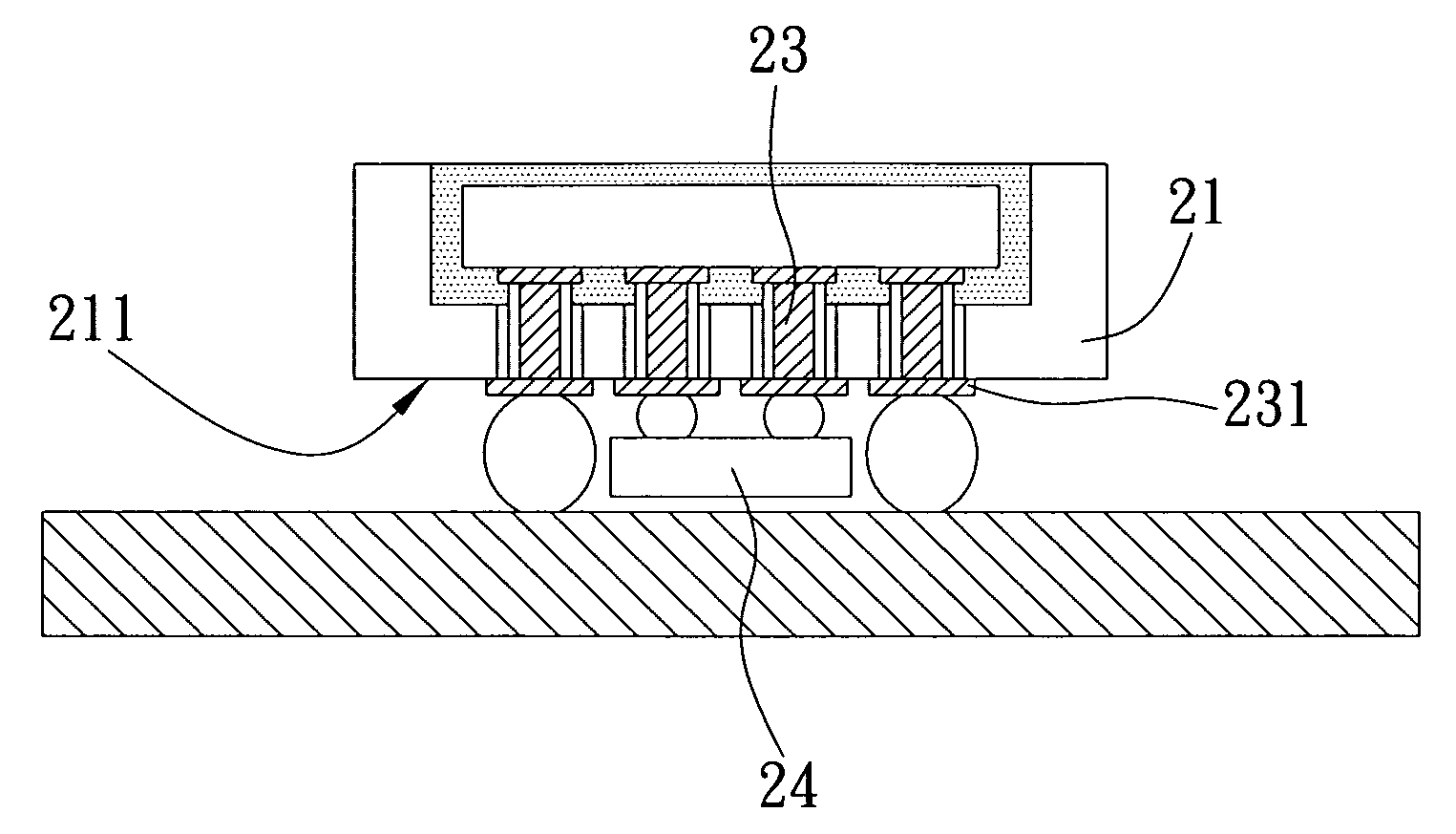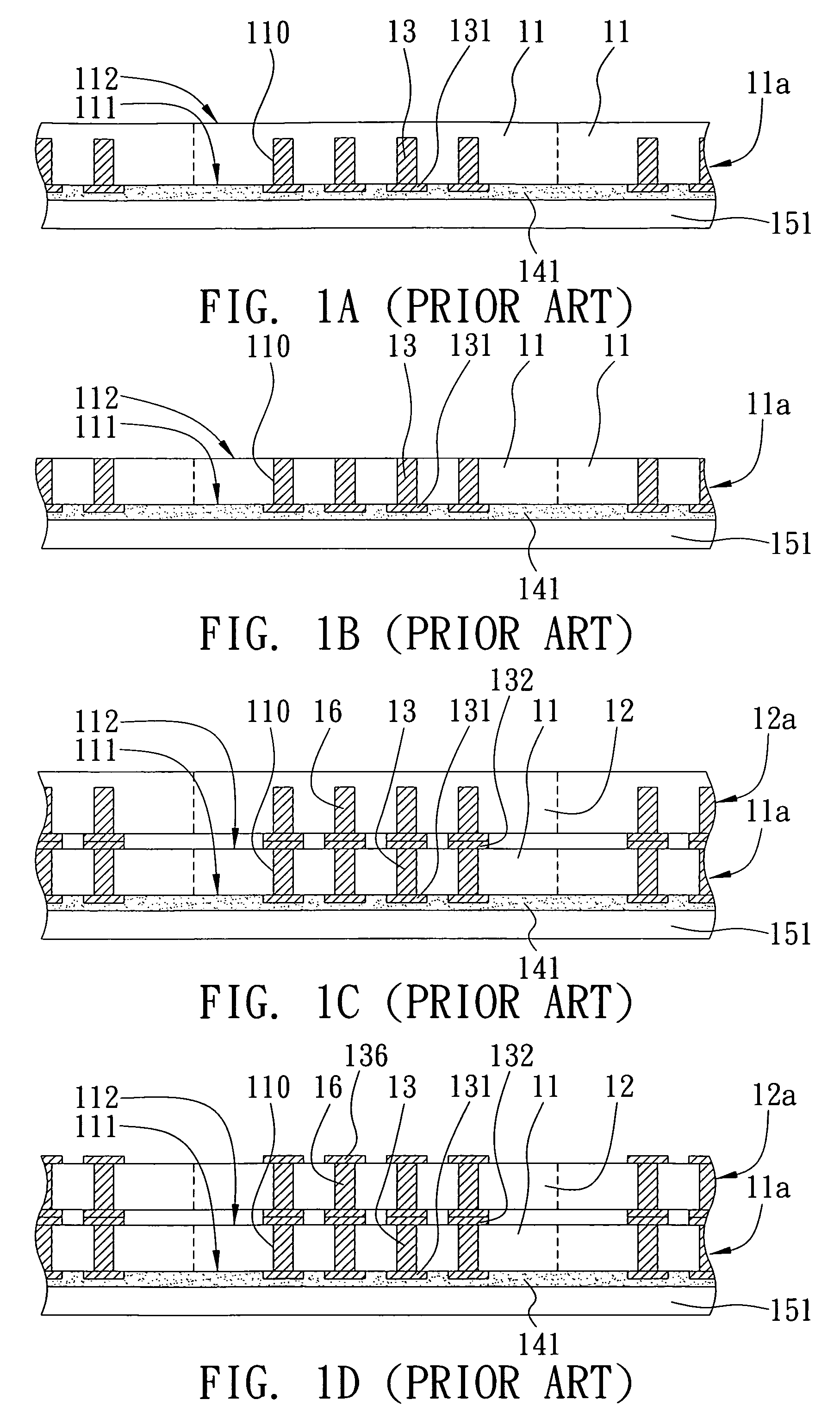Multi-chip stack structure having through silicon via and method for fabrication the same
a stack structure and silicon via technology, applied in the direction of semiconductor devices, semiconductor/solid-state device details, electrical apparatus, etc., can solve the problems of increasing the use area of the substrate and the fabrication cost, affecting the quality of the electrical connection between the chips and the substrate, and the number of chips that can be received by the package is also limited, so as to avoid contamination, save fabrication cost, and simplify the fabrication process
- Summary
- Abstract
- Description
- Claims
- Application Information
AI Technical Summary
Benefits of technology
Problems solved by technology
Method used
Image
Examples
first embodiment
[0027]FIGS. 2A to 2F are diagrams showing a multi-chip stack structure having through silicon via (TSV) and a method for fabricating the same according to a first embodiment of the present invention.
[0028]As shown in FIG. 2A, a wafer 21a comprising a plurality of first chips 21 is provided. The wafer 21a and the first chips 21 each have a first surface 211 and a second surface 212 opposed to the first surface 211. A plurality of holes 210 is formed on the first surface 211 of each of the first chips 21, and metal posts 23 and solder pads 231 are formed corresponding to the holes 210 so as to form a TSV structure.
[0029]An insulating layer 23″ made of such as silicon dioxide or silicon nitride is disposed between the holes 210 and the metal posts 23, and a barrier layer 23′ made of such as nickel is disposed between the insulating layer 23″ and the metal posts 23. The metal posts 23 are made of such as copper, gold or aluminum.
[0030]As shown in FIG. 2B, at least a groove 2120 is forme...
second embodiment
[0038]FIGS. 3A to 3D are diagrams showing a multi-chip stack structure having TSV and a method for fabricating the same according to a second embodiment of the present invention. The elements of the present embodiment that are same as or similar to those of the above-described embodiment are denoted by the same reference numerals.
[0039]The present embodiment is mostly similar to the first embodiment, a main difference therebetween is TSV is formed in the second chip such that a third chip can be vertically stacked on the second chip and electrically connected to the second chip, thereby enhancing electrical performance of the whole structure.
[0040]As shown in FIG. 3A, at least a second chip 22 is disposed in the groove 2120 of the second surface 212 of the first chip 21 and electrically connected to the metal posts 23 of the first chip 21 exposed from the groove 2120, wherein the second chip 22 has metal posts 223 formed therein so as to form a TSV structure. An insulating material ...
third embodiment
[0045]FIG. 4 is a diagram showing a multi-chip stack structure having TSV and a method for fabricating the same according to a third embodiment of the present invention. For simplification, the elements same as or similar to the above-described embodiments are denoted by the same reference numerals.
[0046]The present embodiment is mostly similar to the above-described embodiments, a main difference of the present embodiment from the above-described embodiments is at least a fourth chip 24 is further disposed on the first surface 211 of the first chip and electrically connected to the solder pads 231 on the first surface 211 of the first chip 12, thereby enhancing electrical performance of the whole structure.
PUM
 Login to View More
Login to View More Abstract
Description
Claims
Application Information
 Login to View More
Login to View More - R&D
- Intellectual Property
- Life Sciences
- Materials
- Tech Scout
- Unparalleled Data Quality
- Higher Quality Content
- 60% Fewer Hallucinations
Browse by: Latest US Patents, China's latest patents, Technical Efficacy Thesaurus, Application Domain, Technology Topic, Popular Technical Reports.
© 2025 PatSnap. All rights reserved.Legal|Privacy policy|Modern Slavery Act Transparency Statement|Sitemap|About US| Contact US: help@patsnap.com



